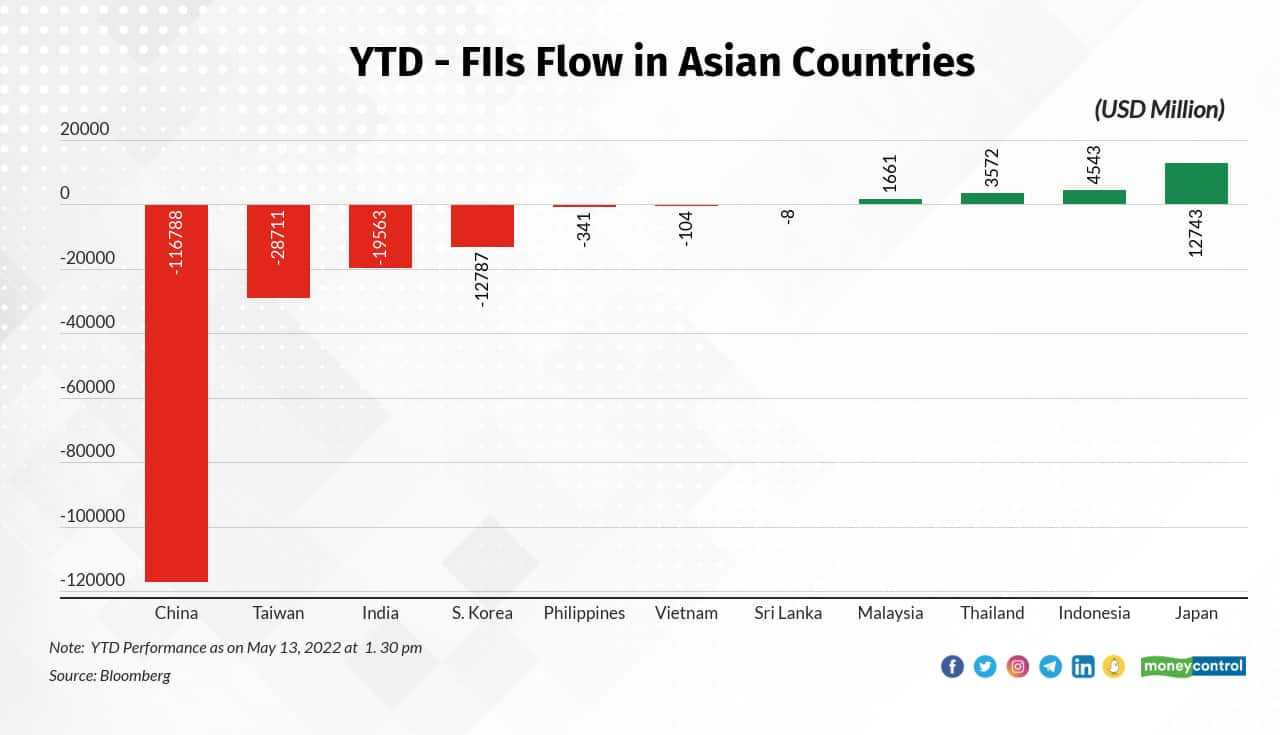



In 2022 so far, the foreign institutional investors, or FIIs, have been net sellers of the Indian equity to the tune of $19,563 million, according to the Bloomberg data. During the same time period, the benchmark index Sensex has fallen about 8 percent.
FIIs have always been very big contributors to the Indian market. Even though retail participation has increased since the start of the pandemic in 2020, the foreign investors still play a big role in marking the direction of the equity market in India. Traditionally, it has been seen that when FIIs are net sellers of Indian equity, the benchmark indices decline, too.
Spooked by Russia-Ukraine war and inflation worries, foreign institutional investors have been incessant sellers of Indian equities so far this year. Anticipation of liquidity tapering, hawkish US Fed policy, comments and lack of macro stability due to Covid-19 have been some other reasons for FIIs to relocate their money.
The US Federal Reserve on May 4 raised the benchmark lending rate by 50 basis points, in what was being viewed as the sharpest increase in over two decades. Back home, Reserve Bank of India (RBI) Governor Shaktikanta Das also announced a 40-basis-point hike in the key lending rate and raised the cash reserve ratio (CRR) by 50 basis points in an unscheduled announcement on May 4.
Amid such uncertainties and tightening of money trails, foreign investors had no other choice but to relook at their portfolios. A study of the Bloomberg data shows that in the year 2022 so far, within Asian countries, FIIs have pared their exposure the most in China, Taiwan, India and South Korea. Meanwhile, they have made investments in Japan, Indonesia and Thailand.
Take a look at the chart for how they fared.

Discover the latest Business News, Sensex, and Nifty updates. Obtain Personal Finance insights, tax queries, and expert opinions on Moneycontrol or download the Moneycontrol App to stay updated!